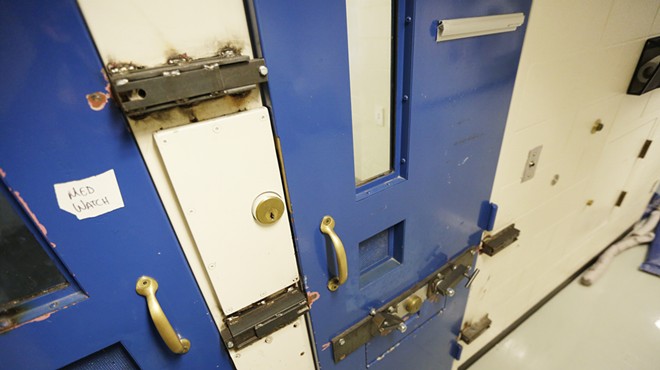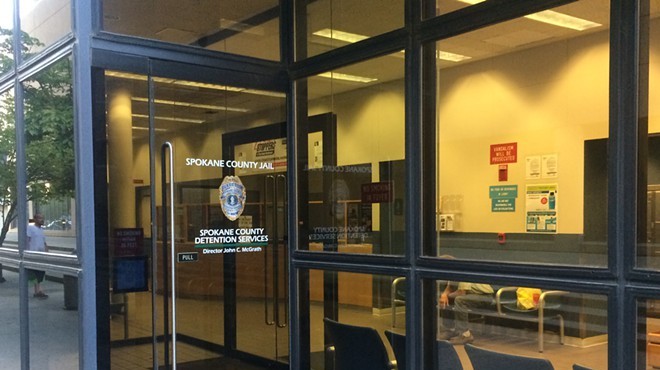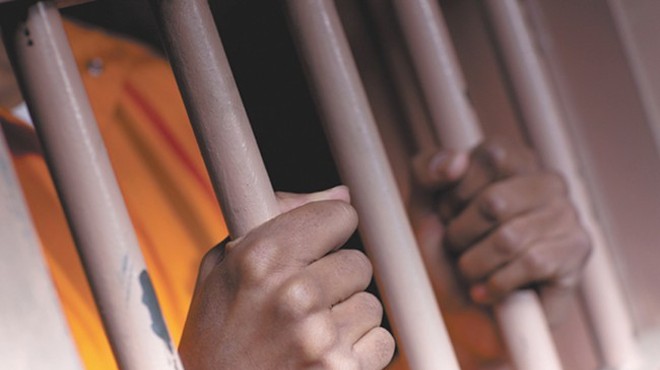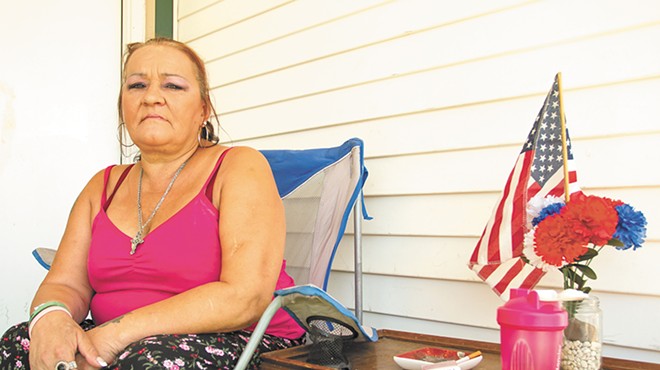Wednesday, August 5, 2015
Suicides in county jails far outnumber those in state prisons, federal report finds
A report released by the federal Bureau of Justice Statistics reveals that suicide accounts for 34 percent of all deaths in local jails. That's a rate of 46 suicides per 100,000 inmates, which represents a 12 percent increase since 2009. Suicide has been the leading cause of death in jails since 2000, the report says. Given the past three months, Spokane County Jail is no exception.
Four people have died in the jail since the beginning of May. John Everitt, 46, was found hanging in his cell with a sheet around his neck on May 4. Lorenzo Hates, 37, died May 13 from meth toxicity and choking on his own vomit while in a restraint chair the jail's booking area, according to the Medical Examiner's Office. His death was ruled a homicide. Scott M. Stevens was found unresponsive in his cell June 12, and Tammy Sue Heinen, the most recent person to die in the jail, died July 13. She was arrested for a parole violation while on her way to the hospital.
Comparatively, state prison suicides accounted for only nine percent of total prison deaths, according to the BJS report. Suicide was the second-rarest cause of death from 2000-2013, higher only than drug and alcohol intoxication.
Why the huge difference between local jails and state prisons?
Kristina Ray, the mental health manager at the Spokane County Jail, says part of the reason is that individuals sent to prison are stable.
"They have the proper medication, they're not withdrawing and they've had the opportunity to acclimate to the environment," Ray says. "Where as in the county jail, they're just taken off the streets and could still have drugs or alcohol in their system."
When someone arrives at the jail, they go through a medical screening that involves questions about mental health and suicidal thoughts. The screening also involves observations from officers, Ray says.
If a person answers yes to questions about thoughts of hurting themselves or others, they're given a mental health assessment, which means they're placed on suicide watch. (Everitt was on suicide watch when he died).
The first 24 hours after a person is booked into the jail are the most high-risk, Ray says. Even if a person answers "no" to questions about self-harm, jail staff does a second interview with them within that critical time frame just to be sure.
Other stats from the BJS report:
- From 2000-2013, about 70-75 percent of all inmate deaths (not just suicides) in local jails were unconvicted individuals, which means, according to the law, they were innocent. Suicides accounted for 3,400 of those unconvicted deaths, the most of any cause of death listed in the report. The second most was heart disease at 2,195.
- Although total inmate deaths increased by one percent from 2012 to 2013, suicide deaths increased nine percent and drug and alcohol deaths increased 23 percent during that same time.
- The typical jail inmate who died in 2013 was male (87%), white (54%), 35 or older (70%) and in custody for fewer than seven days (40%).
- 80 percent of jails reported no deaths in 2013, 12 percent reported only one death and six percent reported multiple deaths.
- In Washington state in 2013, 16 people died in local jails. Compared with six in Idaho, four in Oregon and 128 in California.
Tags: Spokane County Jail , suicide , jail deaths , News , Image





















